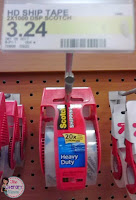's Summer Institute. Tonight I started on part one of my assigned reading for the program, Teaching for Joy and Justice by Linda Christensen.
I got up to page 38 before my eyes started getting sleepy (snuggled under a blanket with a kitty on top tends to have that effect). In her introduction, Christensen emphasizes the need for reading and writing to be connected to issues that students care about. I agree completely and I have lots of fiction and poetry that my students can connect to, but I am always looking for good nonfiction (readable and interesting). Chapter One is focused on poetry, which I feel is one of my strong points when it comes reading and writing. I do a lot of
close readings and
imitation poetry, where my students write in the style and/or form of a poem that we have read.
Christensen discussed four poems that she does the same with: "Raised by Women" by Kelly Norman Ellis, "What For" by Garrett Hongo, "For My People" by Margaret Walker, and "Knock Knock"by Daniel Beaty. Four poems that are new to me, but would resonate with my students. Christensen also discusses the importance of allowing students to share and respond to each others poetry, which is something I haven't done in too long.
I have been taking careful notes as I read on all the ideas for lessons of Christensen's that I want to try teaching (pretty much all of them) and ideas for lessons connected to hers. And thinking about planning lessons makes me itch to actually create them.
Two of Christensen's best ideas, which show up over and over in the book (I'm up to page 175), are ideas that can be implemented over and over throughout the year to help students improve as writers. The first idea is the "read-around." Students share their writing (poetry, narrative, essay) seated in a circle. As each student shares, their peers respond with positive comments (written down first, then shared out loud). The read-around not only allows students to see how others write and what works, it builds community. It allows students to see that they have shared experiences. It teaches empathy. In my school we are supposed to be practicing Restorative Practices and the read-around is really just a "circle" with an academic purpose. I did this once in my second year of teaching during a poetry unit with my Honors students. My students loved it. Now I wonder why I haven't tried it again.
The second idea is her criteria checklist for different types of writing. Before Christensen's students start on a piece of writing, she has them examine examples (poems if they are going to write poetry, narratives if they are going to write narratives, etc.) and use a checklist to annotate the text. For example, the narrative checklist includes: dialogue, blocking, character description, and setting description as musts, figurative language, interior monologue, and flashbacks as pluses. Christensen's preferred method of annotating is using different color highlighters so the elements of the checklist are highly visible/visual. When students write their own narratives, they will use this same checklist to annotate their work, to see what they have included and what is missing, to plan for their revisions. Christensen's grading ties into these rubrics. Grades are based on completion. A completed draft might be worth 150 points, a completed revision (with highlighting and rubric attached) might be worth 300 points. A writing assignment is not complete (and therefore won't receive a "grade" or points) until it meets all of the criteria on the checklist.
Once I am finished reading and have collected all of Christensen's ideas, I want to create a plan for my year, what I lessons I will use from her, what I use connect with past lessons and readings, so that I can stick with it as the year goes on. If I don't plan, I won't commit, and I will end up letting good ideas slip away.
If you are interested in purchasing a copy of
Teaching for Joy and Justice for yourself, you can find it on Amazon
here.

Note: The Literary Maven is a participant in the Amazon Services LLC Associates Program, an affiliate advertising program designed to provide a means for sites to earn advertising fees by advertising and linking to amazon.com.
 With your photo "maps" from the previous year, you will finish decorating your room quickly and can then use your time for planning those awesome first day lessons. You can even have your spouse or child or friend or colleague help you because they can just look at your photo "maps" rather than needing so much of your guidance that their help is no longer helpful.
With your photo "maps" from the previous year, you will finish decorating your room quickly and can then use your time for planning those awesome first day lessons. You can even have your spouse or child or friend or colleague help you because they can just look at your photo "maps" rather than needing so much of your guidance that their help is no longer helpful.







 .
.

